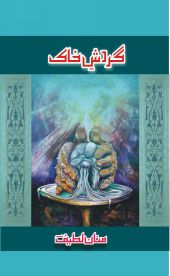رضاعی مائوں پر ایک بحث
حضرت برکہ ( ام ایمن) علامہ جلال الدین سیوطی الخصائص الصغری میں ام ایمن کے متعلق لکھتے ہیںکہ انہوں نے حضور کو دودھ پلا یا۔ ( ۲) میاں محمد صدیقی نے سیرت حلبیہ کے حوالے سے لکھا ہے کہ دودھ پلانے والیوں میں ام ایمن کا نام بھی لیا جاتا ہے ۔ (۳) عبدالمصطفی محمد اشرف نے لکھا کہ عبد الحق محدث دہلوی ‘ شبلی نعمانی اور قاضی محمد سلیمان منصور پوری کی کتب اس بارے میں خاموش ہیں آخر میں عجیب بات لکھی ہے کہ بہرحال ہم نے ام ایمن کا نام لکھ دیا ہے کہ اگر وہ واقعی اس شرف کی حامل ہے تو ہم کسی کا حق کیوں ماریں ؟ مخالف آراء اور تحقیق سیرت نگاری کے حوالے سے اہل ایمان کو قلم نہایت محتاط طریقے سے استعمال کرنا چاہیے کیونکہ ذرا سی بے احتیاطی کیا سے کیا کچھ بنا دیتی ہے نیز ایک شخص کی بے احتیاطی ایک راستہ فراہم کرتی ہے اور دیگر حضرات بغیر سوچے سمجھے اور تحقیق و تفتیش کیے بغیر اچک لیتے ہیں اور بغیر کسی سند اور معتبر حوالہ کے لکھتے اور بیان کیے جاتے ہیں ۔ مثال کے طور پر اوپر میاں محمد صدیقی نے سیرت حلبیہ کے حوالے سے لکھا کہ دودھ پلانے والیوں میں ام ایمن کا نام بھی لیا جاتا ہے جبکہ حلبی نے تردید والی بات کی ہے جسے میاں صدیقی گول کر گئے ہیں ۔
عمر رضا کہالہ مشہور ماہر انساب نے مستدرک حاکم ‘ الاصابہ ازابن حجر ‘ تہذیب التہذیب از ابن حجر ‘ الاستیعاب از ابن عبدالبر التہذیب ازذہبی اور المجتنبی از ابن جوزی کے حوالہ سے حضرت برکہ بنت ثعلبہ کا ذکر کیا ہے اس ذکر میں انہیں پرورش اور خدمت کرنے والی کہا گیا ہے ۔
عبدالمصطفی محمد اشرف لکھتے ہیں...
A nation is formed by society. A society is a group of individuals, families and tribes. These together form locality which are settled into cities. Combined cities form a Nation. Islam is a way of life revealed for every individual of every nation. Our last prophet ﷺis the role model for the whole humanity. His preaching was based upon the teachings of Holy Quran meant for the welfare of society and individuals. He lays the foundation of Islamic Welfare Estate after arriving to Madina. It helps Muslims to follow the teachings of Islam with freedom. Revolutionary steps were taken for the betterment of education and health issues. The foundation was based on Islamic Ethical Values of society. He developed new and modern strategies for the defense of newly developed estate. He himself rules the estate and society as a jurist and legislator. The pact of Madina shows the institutional, internal and external rules and regulations for the newly born Islamic estate. It is also known as the first ever written pact of all the time in known history.
Plant growth promoting rhizobacteria are being widely utilized in agriculture due to their biopesticide and biofertilizer potential. The indigenous PGPR inhabiting certain hosts can act as potent bioinoculants due to their native habitat and acclimatization to the environment. In current study, rhizobacterial mediated suppression of blast disease was investigated. Four hundred and fifty indigenous isolates were obtained from rice rhizosphere to assess their antagonism towards rice blast pathogen Pyricularia oryzae. Only 100 isolates showed antagonistic activity. Twenty out of 100 isolates inhibited the mycelium growth of P. oryzae by 30–65% in vitro. Five strains, KFP-5, KFP-7, KFP-12, KFP- 17 and KFP-18, showing 63–65% antagonism towards P. oryzae, were tested for the production of biocontrol determinants and suppression of blast disease in rice plants. The antagonistic strains produced various biocontrol determinants such as the hydrolytic enzymes, protease, glucanase and cellulase with solubilization zone diameters of 10–19, 4.2–14.5 and 2–13.5 mm respectively and siderophores with zone diameter of 7–12 mm. The antagonistic strains also solubilized potassium, phosphorus and zinc from inorganic sources with solubilization zones of 2.1–3.2, 2.3–3.6 and 1.7-2.9 mm respectively. Three antagonistic strains, KFP-5, KFP-7 and KFP-17 significantly suppressed blast disease with a disease score 1.1–1.9 and increased yield of rice grown in pot. The antagonistic strains, KFP-5, KFP-7 and KFP-17 significantly induced the antioxidant enzymes against P. oryzae infection in rice and secrete biocontrol determinants in rhizosphere. They induced the activity of superoxide dismutase (1.7-1.9 fold), peroxidase (3.5-4.1 fold), polyphenol oxidase (3.0-3.8 fold), phenylalanine ammonia-lyase (3.9-4.4 fold), in rice leaves and roots under hydroponic and soil conditions. The antagonistic strains also secreted multiple biocontrol determinants like protease (1.1-5.5 U/mg of soil or U/mL of hydroponic solution), glucanase, (1.0-1.3 U/mg of soil or U/mL of xii hydroponic solution), siderophores (6.5-42.8 µg/mL or mg) in the rhizosphere of different rice varieties. These antagonistic strains also exhibited bio efficacy under field conditions. They significantly reduced disease severity by 40-52% with grain yield of 3.2-3.9 ton ha-1 in rice. The bioantagonists significantly colonized the rice rhizosphere with a cell population of 2.40E+06-5.6E+07 CFU/g of soil. Rice plants treated with antagonistic bacterial suspension followed by challenge inoculation with P. oryzae were found to have higher enzymatic activities like superoxide dismutase (308-266 Ug-1 FW), peroxidase (change in absorbance (∆A) = 0.20-0.71 min-1 g-1FW), phenylalanine ammonia-lyase (∆A = 0.32-0.59 min-1 g-1 FW) and polyphenol oxidase (∆A = 0.29-0.58 min-1 g-1 FW). A consistent performance of the strains was observed during consecutive two years. The potent antagonistic strains were identified as Bacillus spp. strains KFP-5 (Gene bank Accession No KT380825), Bacillus spp. KFP-7 (Gene bank Accession No KT380826) and Bacillus spp. KFP-17 (Gene bank Accession No KJ719446) by 16S rRNA gene sequencing. These findings suggest that indigenous Bacillus spp. could be a potential bioinoculum for rice to control blast diseases and enhance yield.



